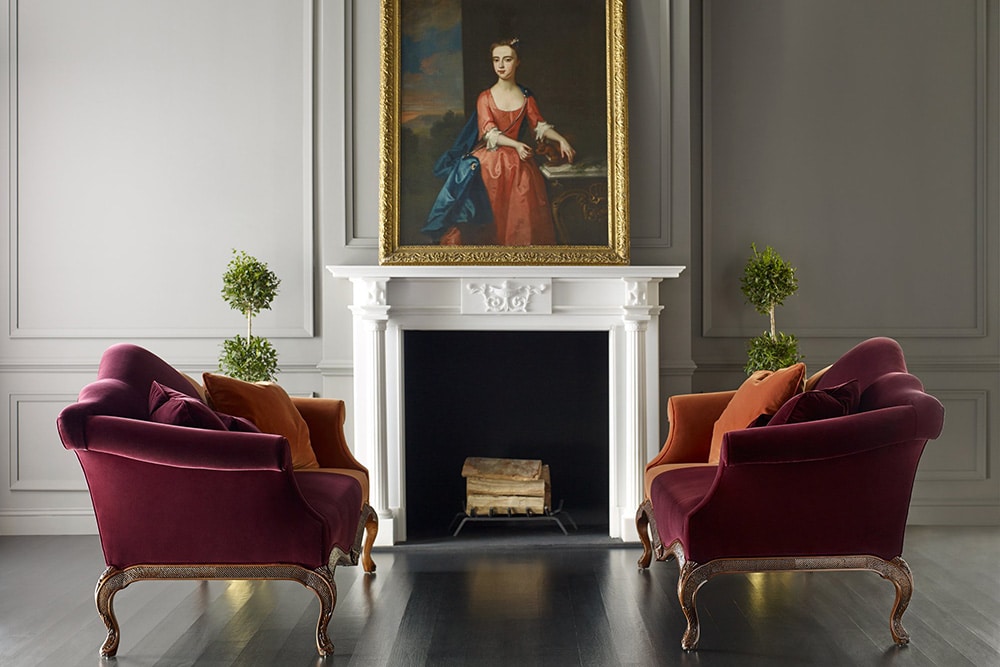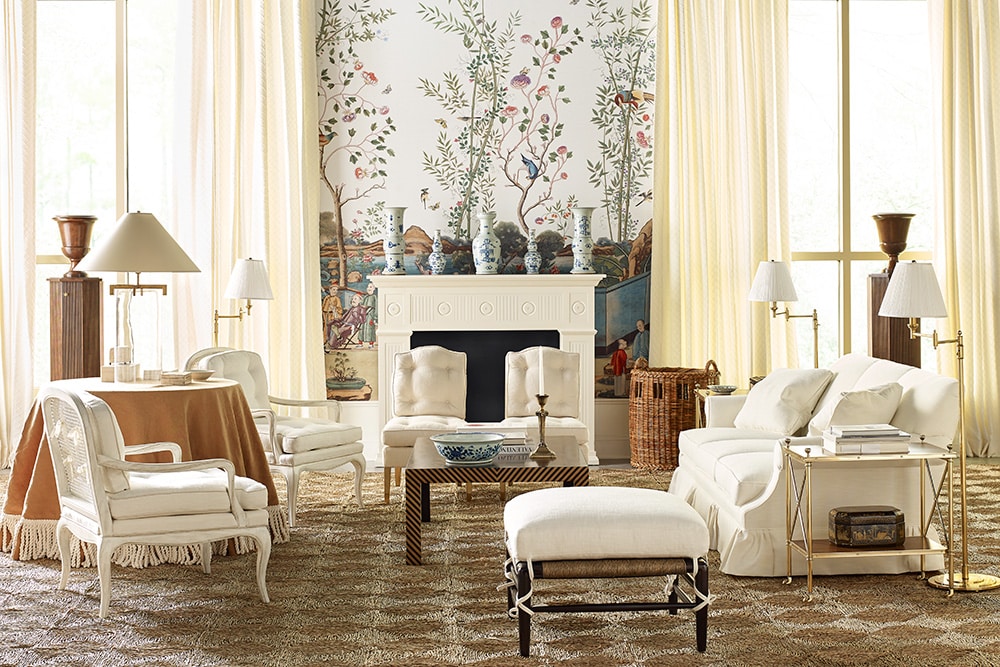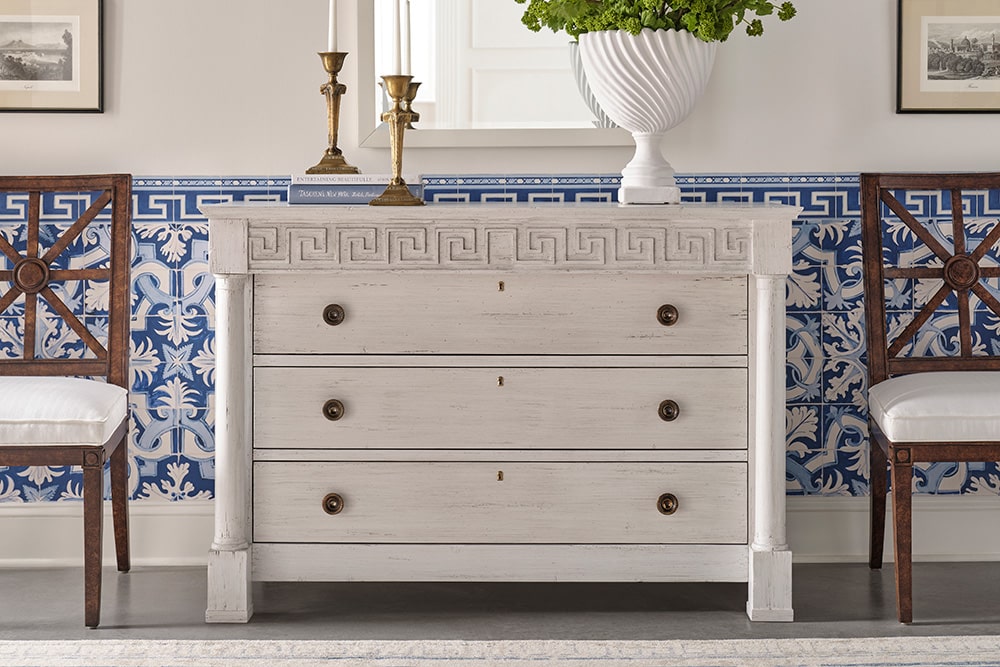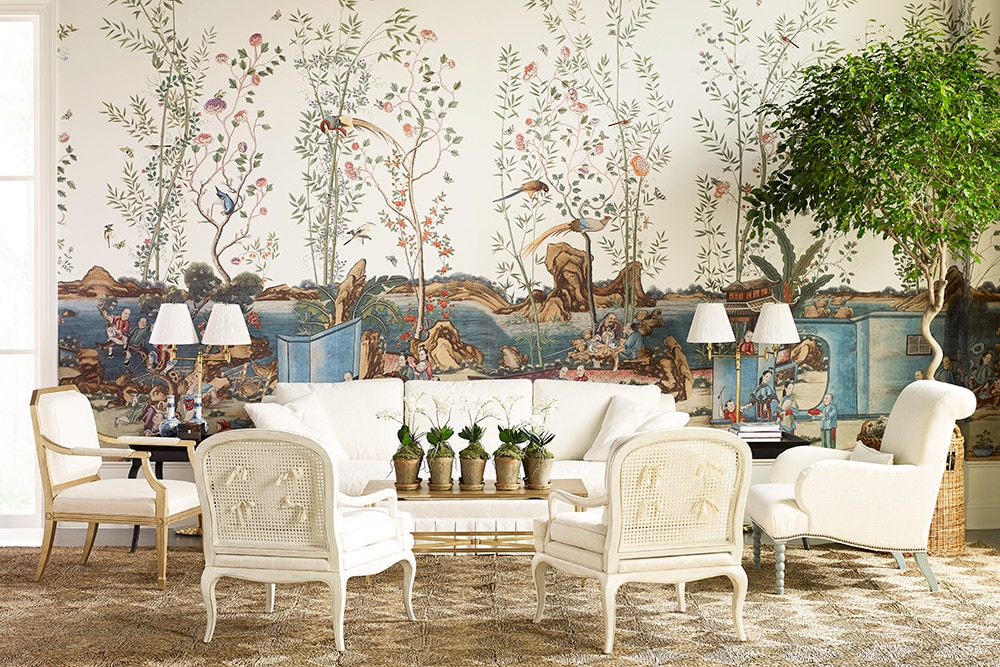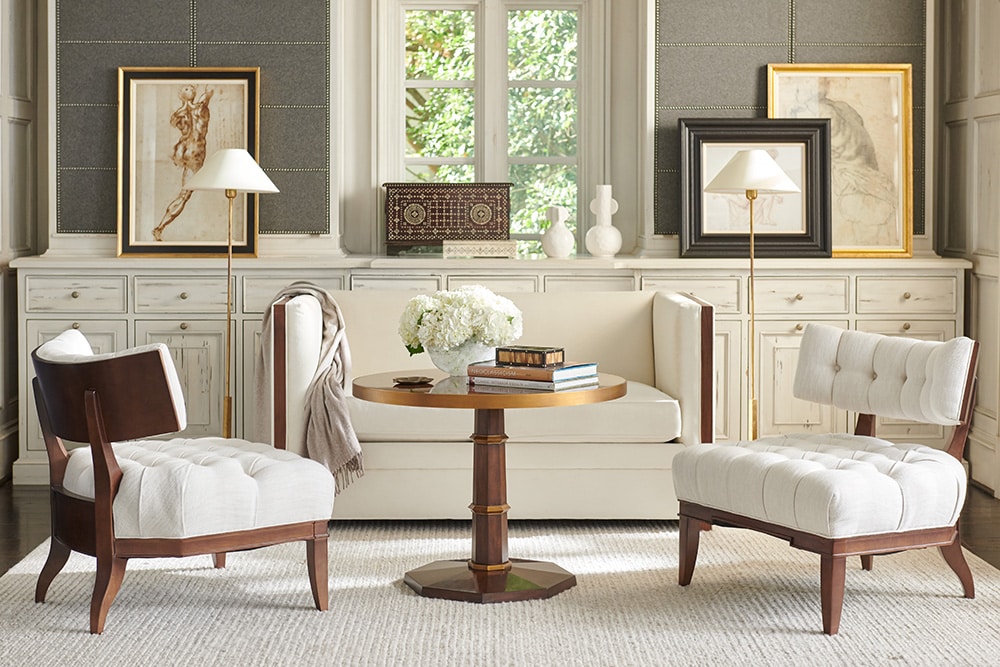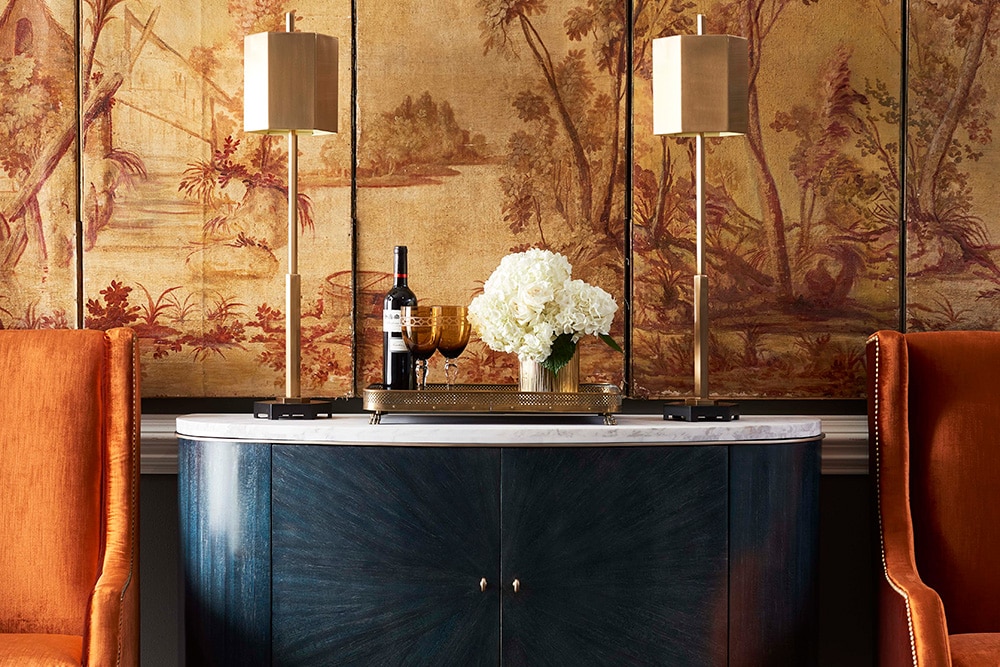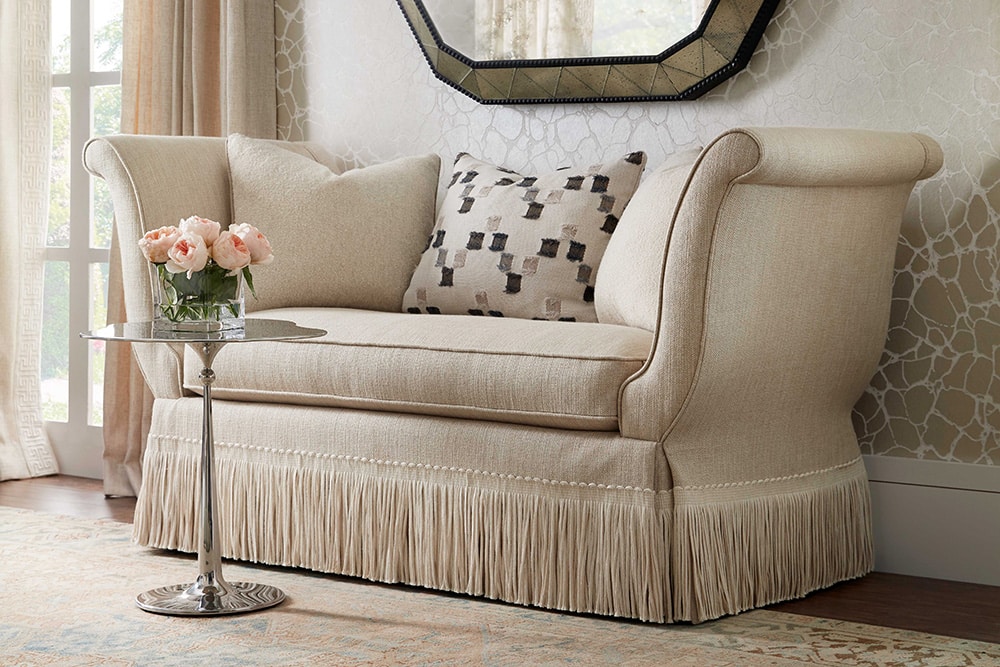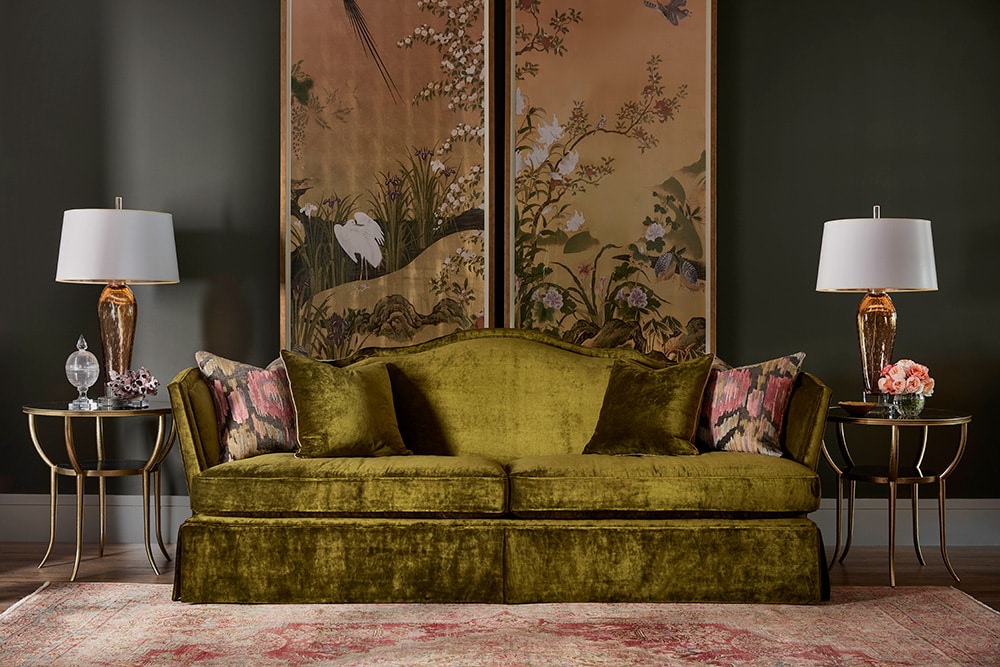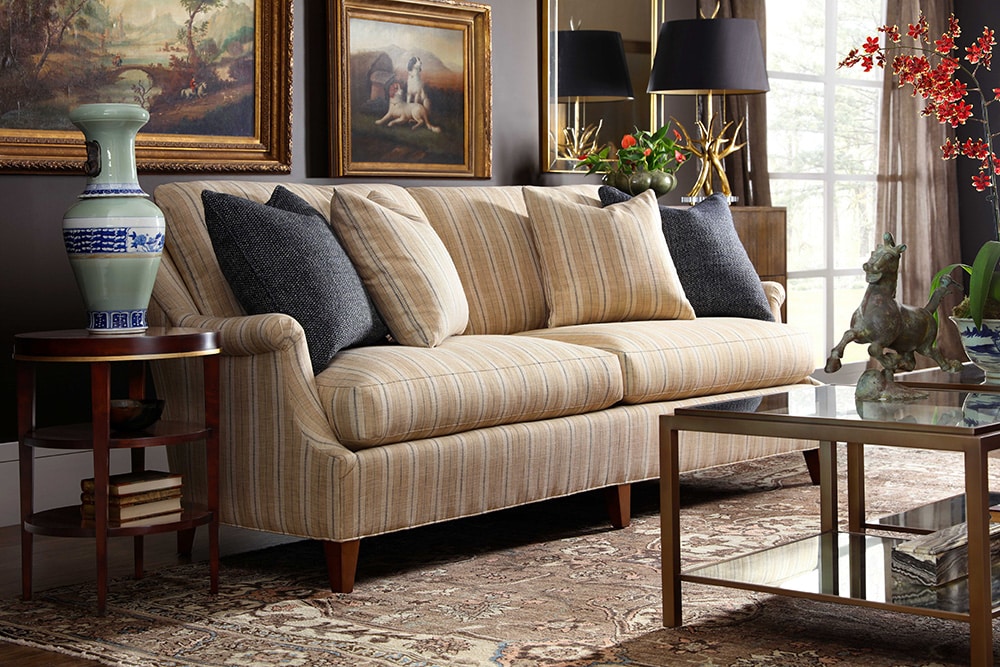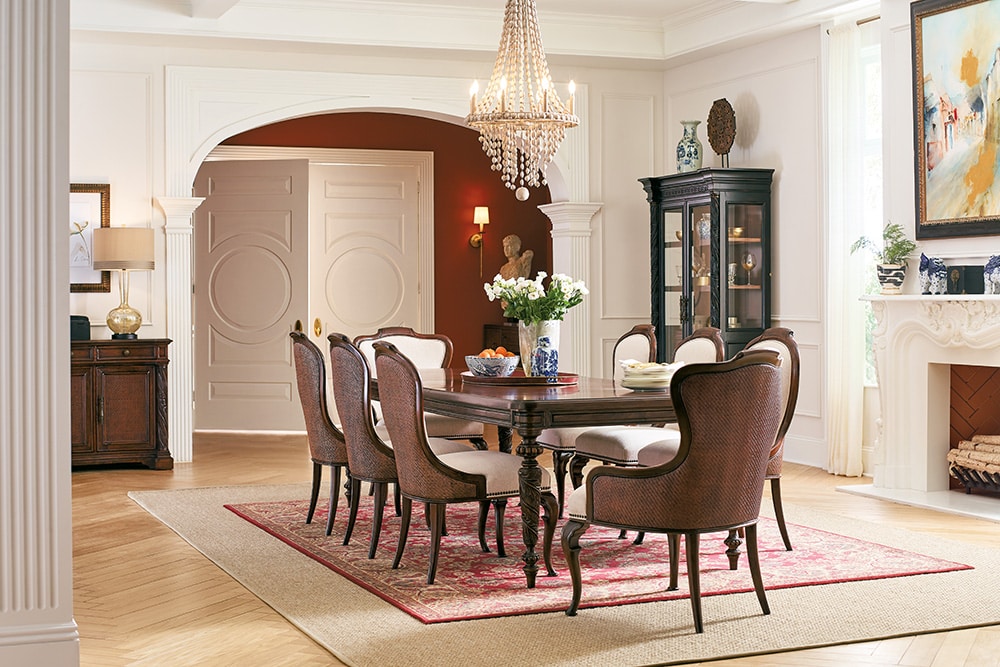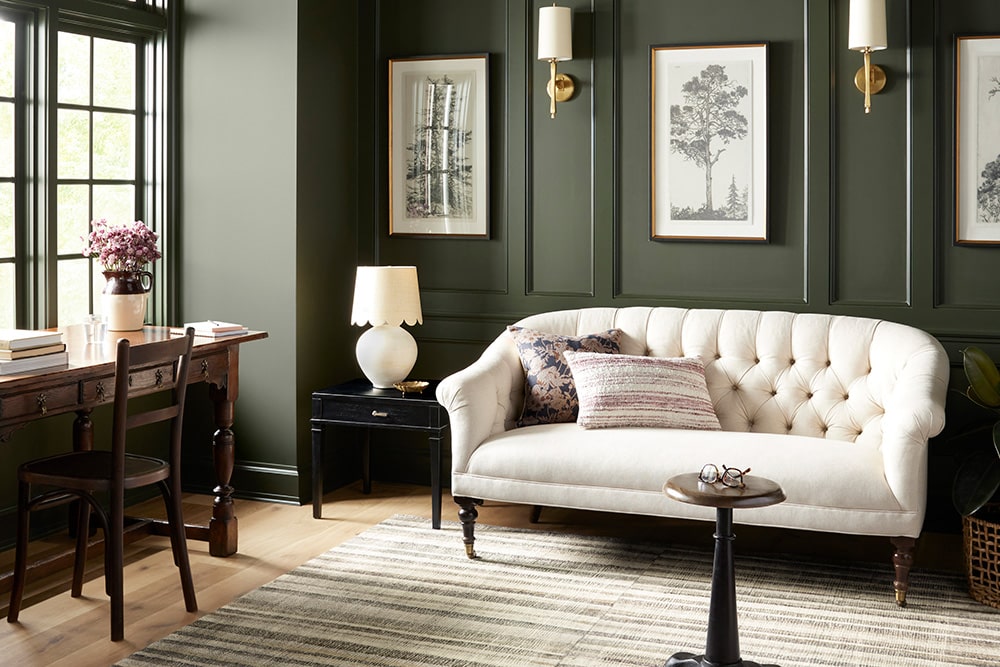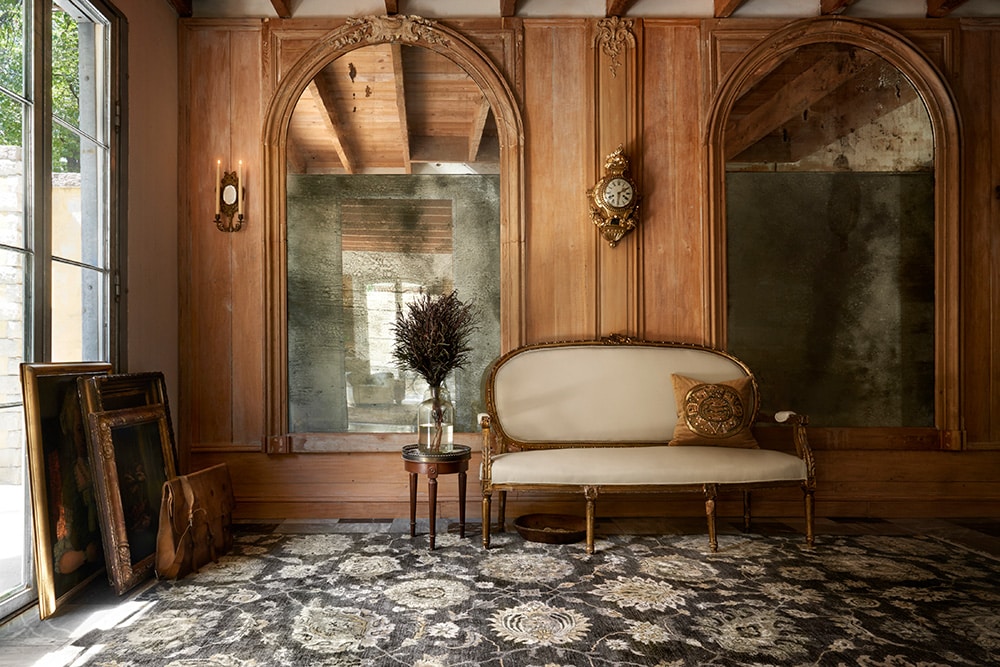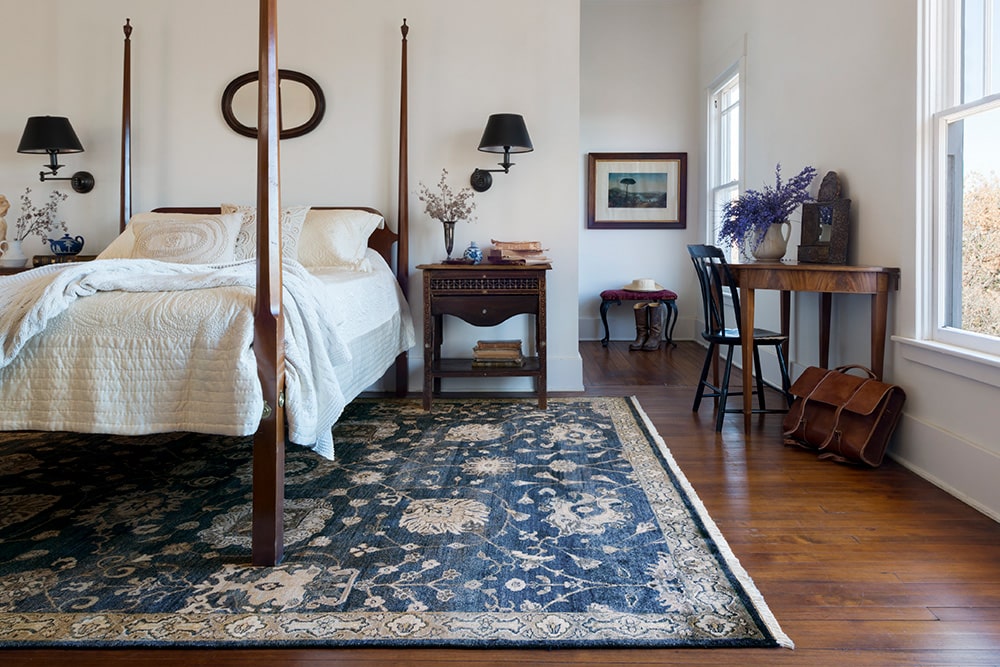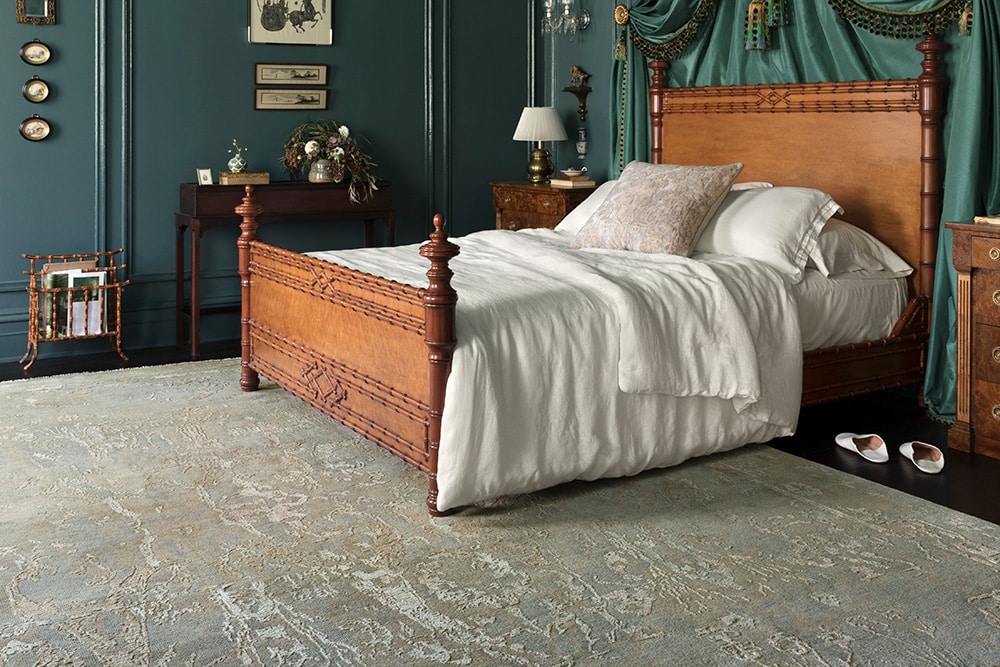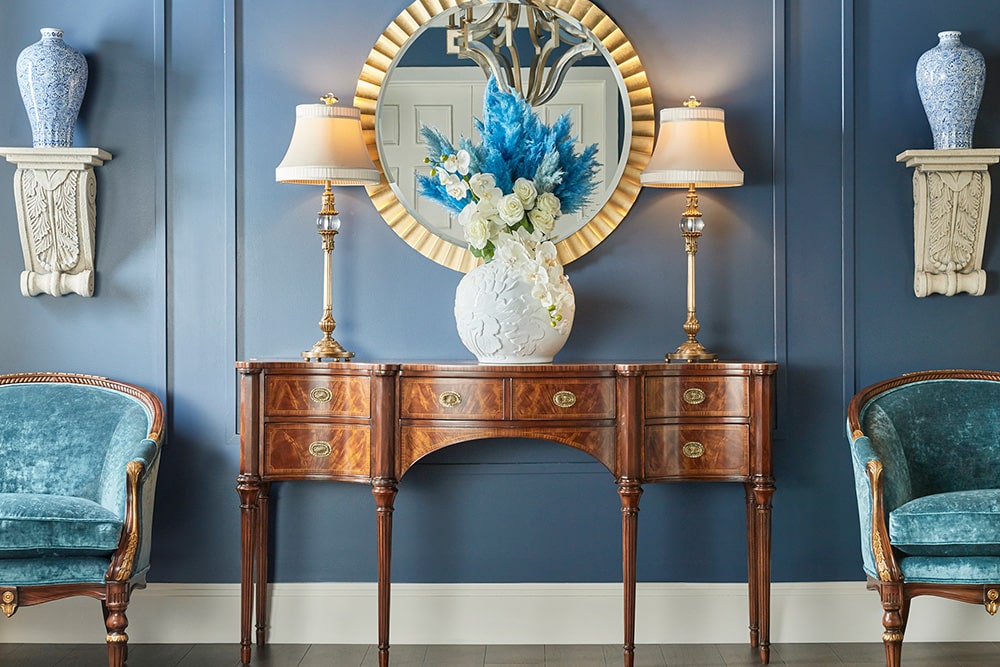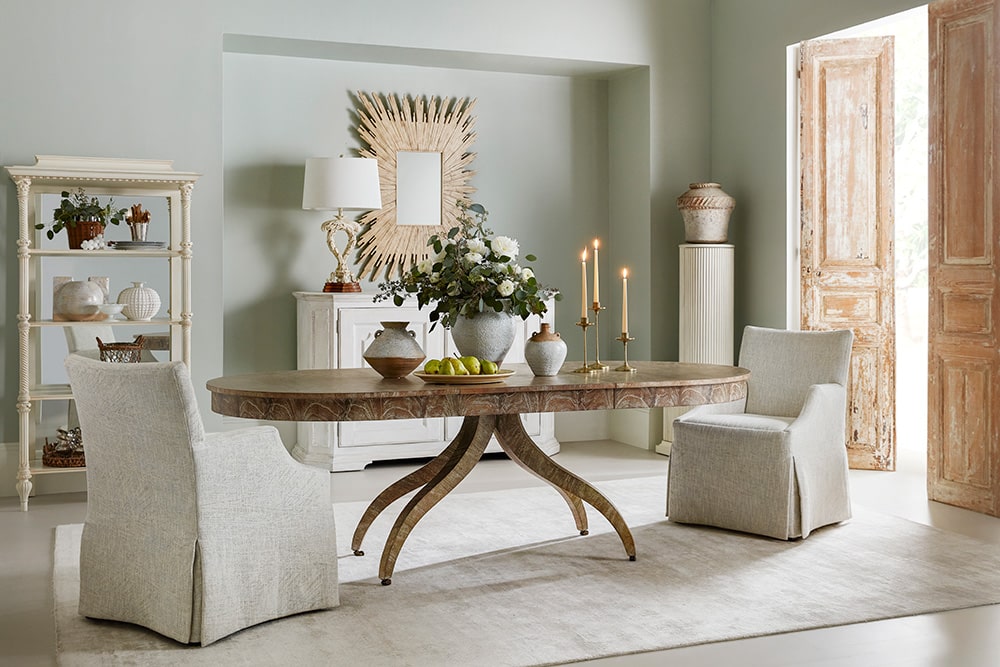Traditional


History of the Traditional Style
Dating back as far as the early 1600s, Traditional furniture was used. This style was born from European eras of regency, a love of extravagance, and an appreciation of fine craftsmanship. This aesthetic encompasses a vast timeline of history and rulers. It originates in the Jacobean era under the rule of King James I, who inherited the throne from his aunt, Queen Elizabeth I, and united Scotland and England. This was a peaceful time where economic stability allowed for incredible developments in literature, science, the arts, religion, and architecture. Borrowing ornate design details from the admired Greek and Roman civilizations, a new style of 3-dimensional carving intricate accents and embellishments was born.
As time moved on, so did design. Eras of prosperity brought encouraged craftsmen to push boundaries and hone their skills. They adopted the most intricate and grand elements to create a truly maximalist feel that exuded wealth and status.
Key influences span several centuries of European design. These include the 17th and 18th century English and German Baroque, and the ornate French Rococo style under Louis XV. The 19th century saw a wave of Revival styles, and was followed by the Victorian era. England’s first mass-produced furniture was named after the famous Queen Victoria. Parisian Art Nouveau emerged in the late 19th and early 20th centuries, leaving a lasting impression on design. This lavish aesthetic has been a favorite of monarchs and nobility throughout history, earning it a loyal following.
Today, the Traditional style in its purest form remains true to its roots, boasting spaces that would feel at home in the parlors and entertaining rooms of society’s upper crusts. On a modernized scale where hand-crafted intricacies are no longer the norm, traditional pieces borrow elements from eras past and soften them to create moments of exquisiteness. A tasteful take on an extravagant style, Traditional is the choice for those who long for luxury and elevated nostalgia.
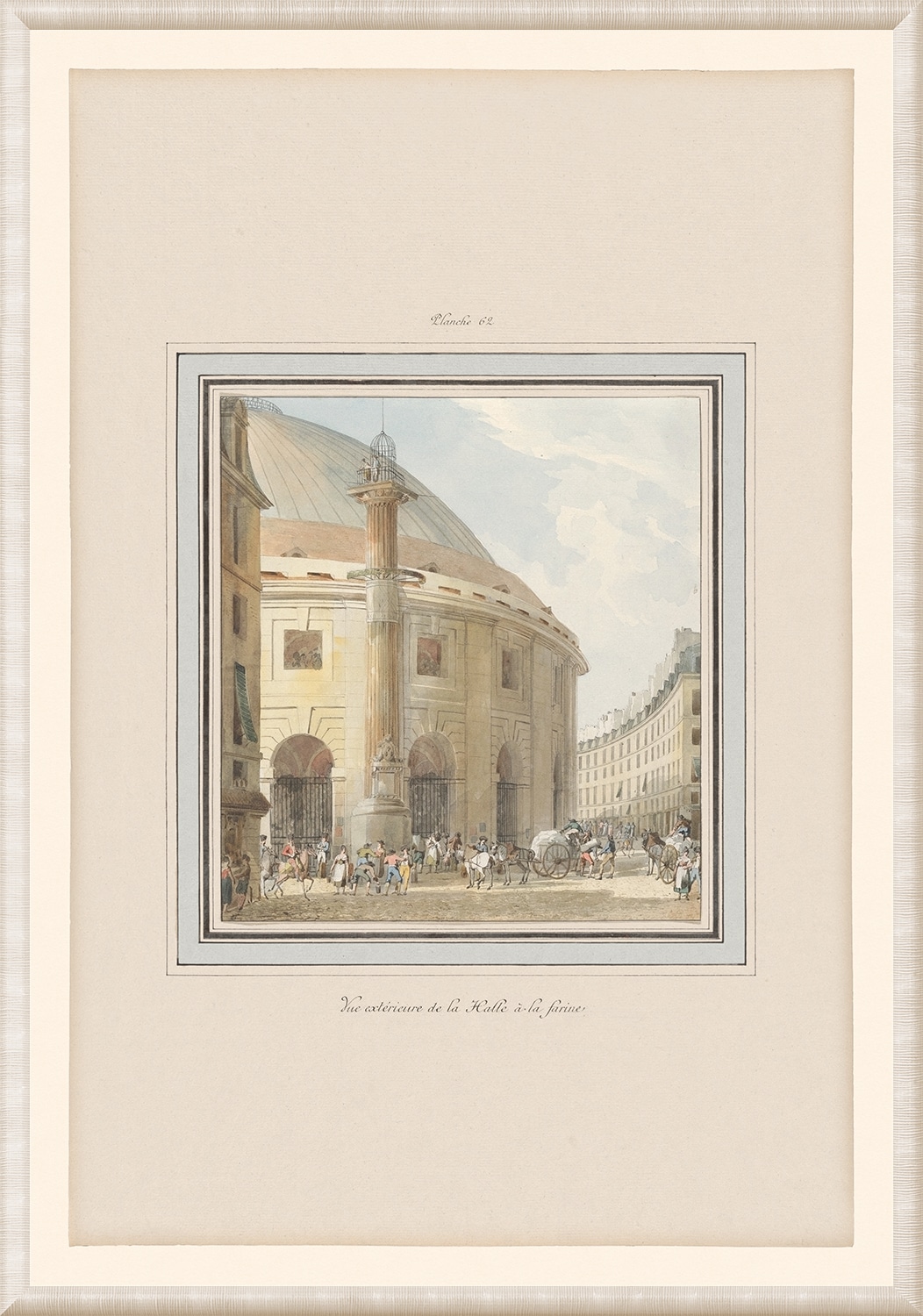
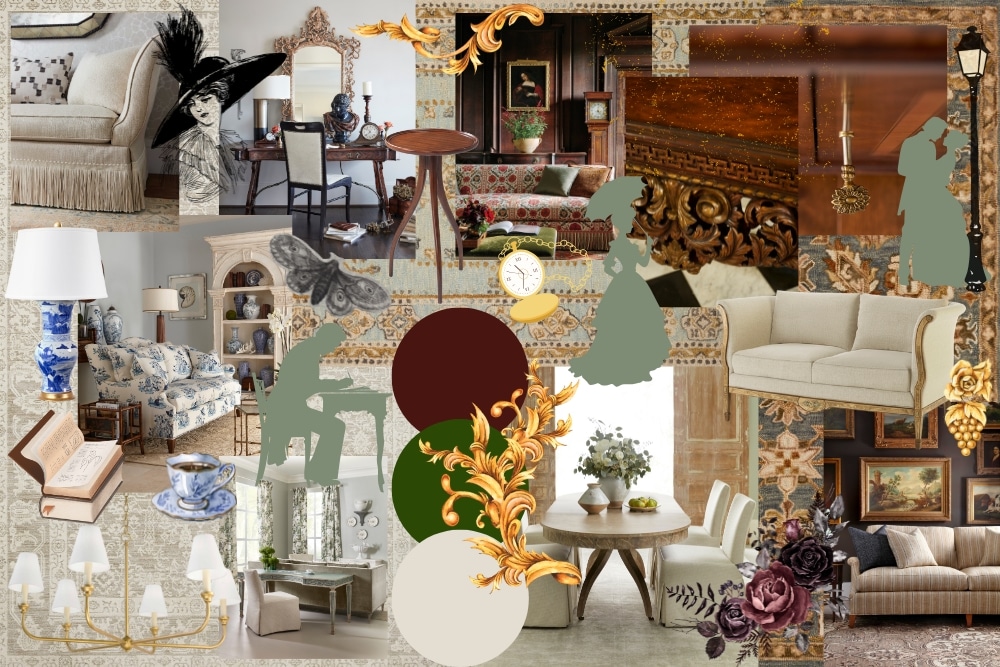
Wholly unbothered by changing times and trends, the Traditional style prefers the intricate and grand ornaments of excess as one would find in the sitting rooms of monarchs and nobility. This style is immersed in bullion fringe, ornately carved Rococo gilded scrolls, luxurious Victorian upholstery buttoned to perfection, and a rich color palette of saturated hues. It is truly a maximalist style for those who dream of a bygone era of sophistication.
Embrace your inner regent, dearest gentle reader, and create a domain of extravagance, intrigue, and opulence. This author finds it to be a most remarkable and compelling choice, indeed.
